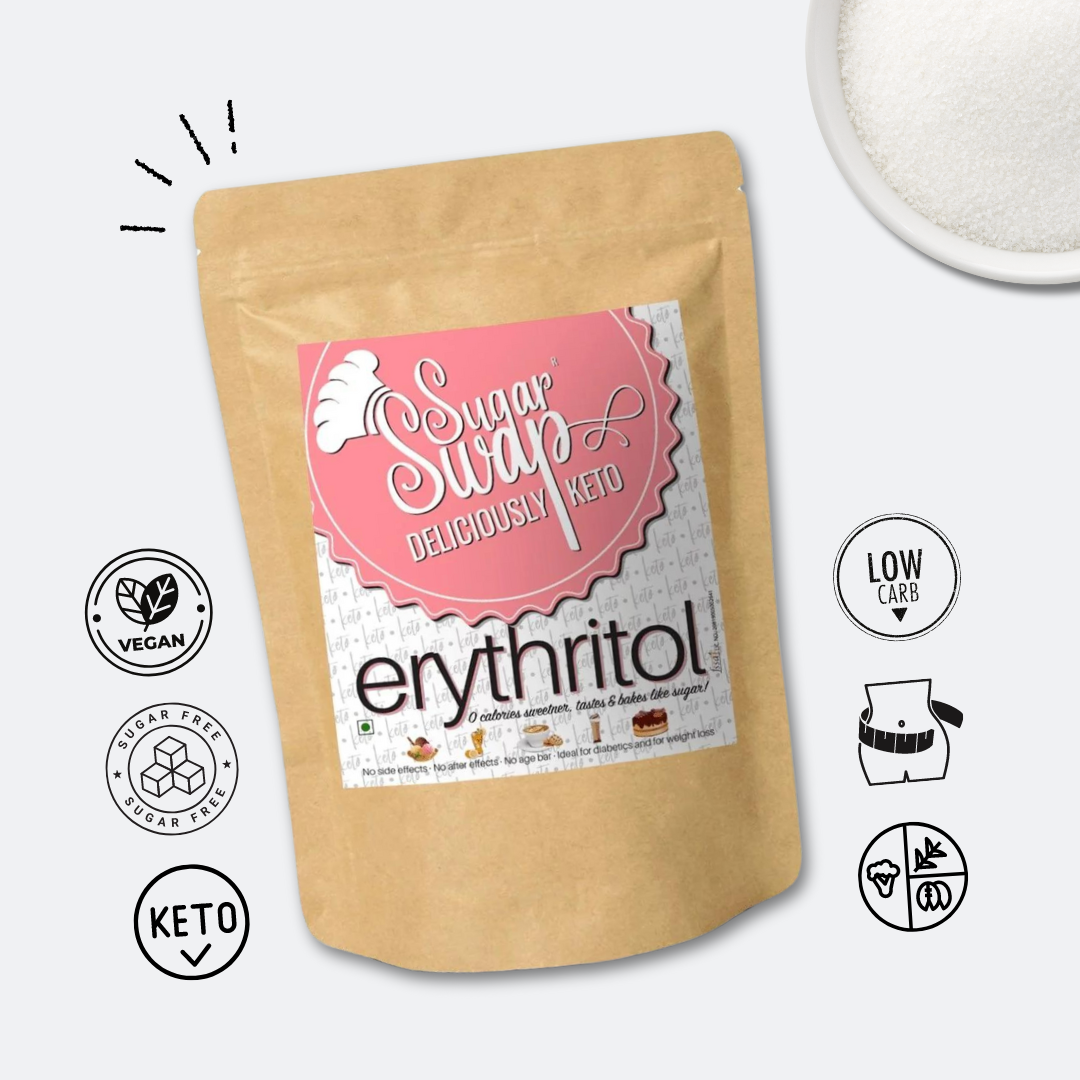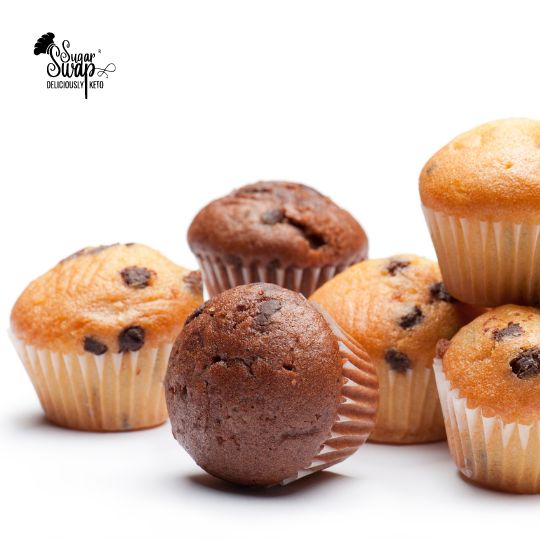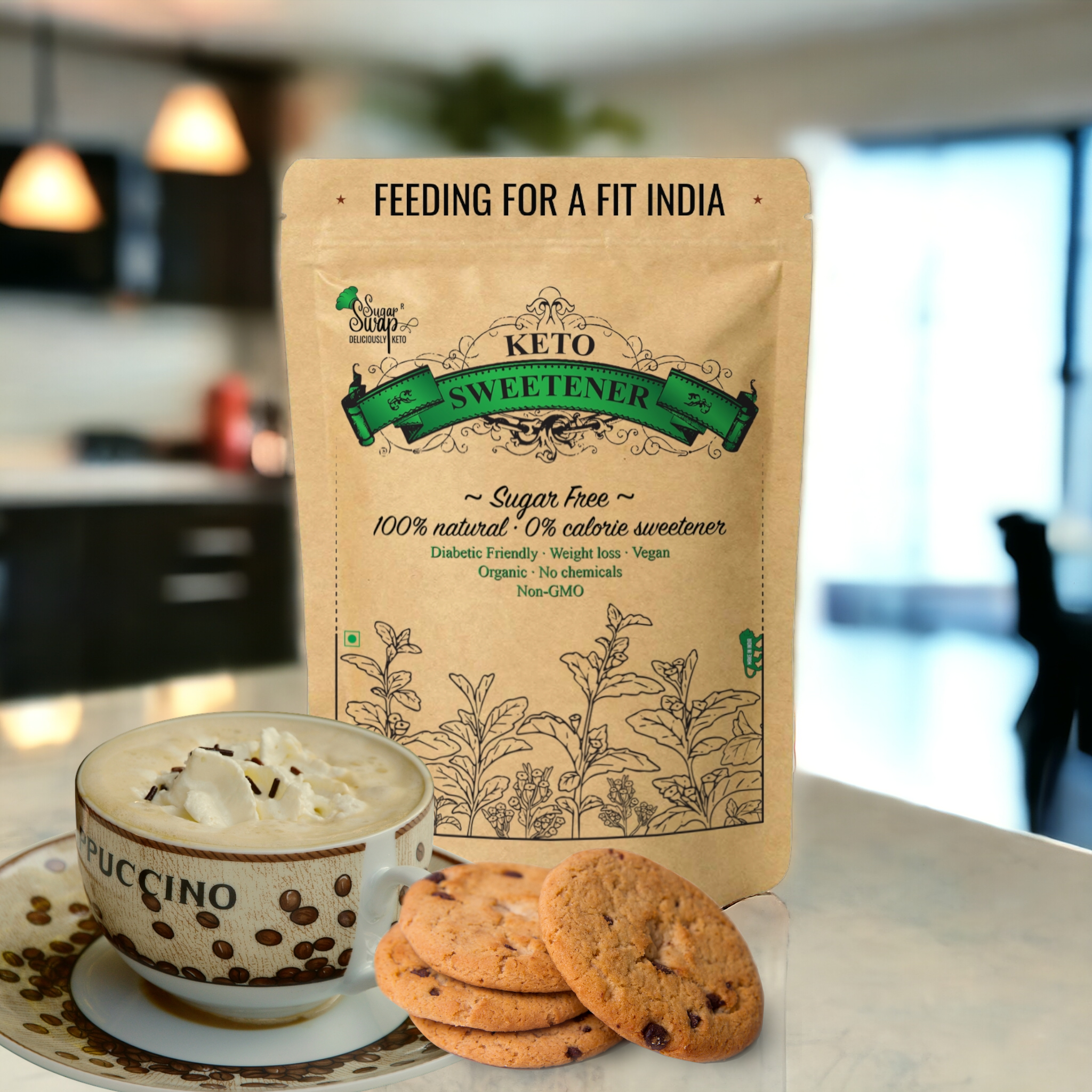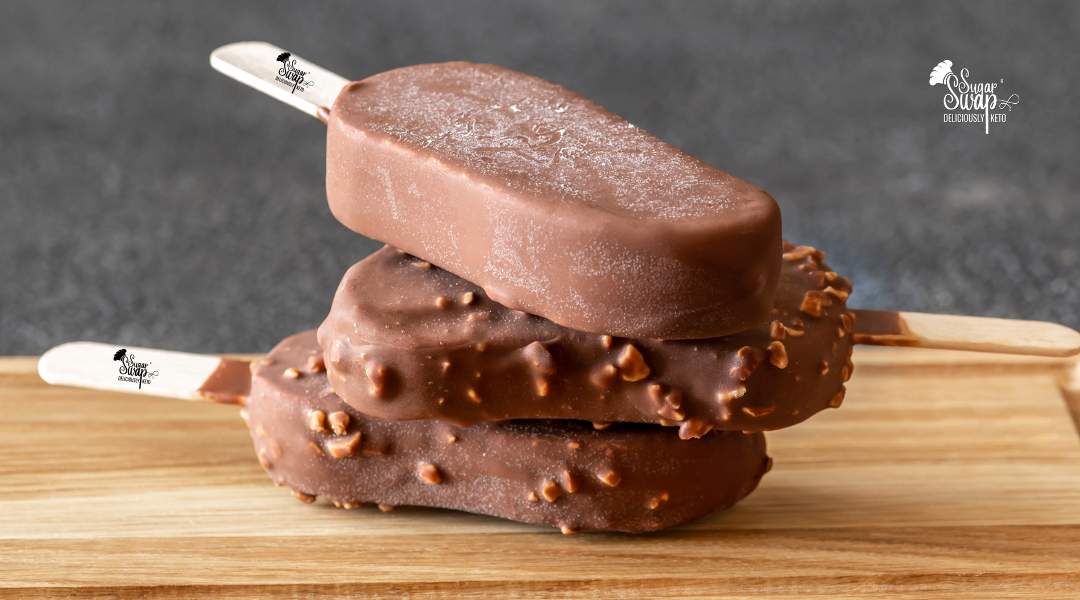You Don't Have to Go Through Trial and Error with Different Keto Sweeteners
Navigating the world of keto sweeteners can feel like a never-ending experiment, but it doesn't have to be.
Imagine having a food scientist by your side, guiding you through the multitude of options to find the perfect sweetener for your specific needs.
This guide will help you choose the right keto sweeteners, understand how they compare to traditional sugars, determine the correct amounts to use, and master the do's and don'ts. Let's dive into the world of keto sweeteners!
1. The Right Options Among Hundreds of Products
The market is flooded with various keto sweeteners, each with its unique properties. Some of the most popular options include:
- Stevia: A natural sweetener derived from the leaves of the Stevia plant, offering zero calories and no impact on blood sugar.
- Erythritol: A sugar alcohol that provides about 70% of the sweetness of sugar with almost no calories.
- Keto Sweetener: A 0 cal perfect blend of Stevia & erythritol perfect for all desserts, baking & beverages.
- Monk Fruit: Another natural option, monk fruit sweetener is extracted from monk fruit and is about 150-200 times sweeter than sugar.
- Allulose: A rare sugar that has about 70% of the sweetness of sugar but with significantly fewer calories and no impact on blood sugar.
- Xylitol: A perfect sweetener for sweets, contains approximately 2.4 calories per gram. This is about 40% fewer calories than regular sugar (sucrose), which has about 4 calories per gram.
2. Comparing Sugars & Keto Alternatives Sold in Stores
When comparing keto sweeteners to traditional sugars, several factors come into play:
2.1. Caloric Content
- Cane Sugar: 16 calories per teaspoon.
- Stevia: Zero calories.
- Erythritol: 0.24 calories per gram.
- Monk Fruit: Zero calories.
- Allulose: 0.4 calories per gram.
- Xylitol: 2.4 calories per gram.
- Keto Sweetener: 0 calories per gram
2.2. Sweetness Level
- Cane Sugar: Baseline sweetness.
- Stevia: 200-300 times sweeter.
- Erythritol: 70% as sweet.
- Monk Fruit: 150-200 times sweeter.
- Allulose: 70% as sweet.
- Xylitol: 75% as sweet as sugar.
- Keto Sweetener: 80% as sweet as sugar.
2.3. Health Implications
- Cane Sugar/ Jaggery/ Honey: High caloric content, spikes blood sugar.
- Keto Sweeteners: Low to no calories, minimal impact on blood sugar, varying digestive tolerances.
3. How to Find Out Exactly How Much Keto Sweetener to Use
3.1. Measuring Sweetness
Using conversion charts can simplify the process. For example:
- 1 cup of sugar = 1 teaspoon of powdered stevia.
- 1 cup of sugar = 1⅓ cups of erythritol.
- 1 cup of sugar = ½ to 1 teaspoon of monk fruit extract.
- 1 cup of sugar = 1 cup of allulose.
3.2. Conversion Charts
These charts help you replace sugar in recipes without guessing. They provide accurate measurements to ensure your dishes turn out perfectly.
4. The Do's and Don'ts of Keto Sugar Alternatives
4.1. Do's
4.1.1. Reading Labels
Always check labels for added ingredients that may not be keto-friendly, such as maltodextrin.
4.1.2. Starting Small
Start with small amounts and adjust according to taste to avoid overpowering sweetness or aftertastes.
4.2. Don'ts
4.2.1. Overconsuming
Even keto sweeteners can cause digestive issues if consumed in excess, particularly sugar alcohols like erythritol.
4.2.2. Ignoring Side Effects
Pay attention to how your body reacts to new sweeteners to avoid discomfort.
5. The Rules for Baking with Keto Sugar Alternatives
5.1. Adjusting Recipes
Keto sweeteners often lack the bulk that sugar provides, so you may need to adjust other ingredients, such as adding more almond flour or eggs.
5.2. Textural Changes
Expect different textures. For instance, erythritol can make baked goods crispier, while allulose can retain more moisture.
5.3. Flavor Alterations
Some sweeteners, like stevia and monk fruit, have distinct aftertastes. Combining them with erythritol can help balance flavors.
6. How the Keto Sweetener You Choose Can Impact the Outcome of Recipes
6.1. Moisture Content
Sugar helps retain moisture in baked goods. Erythritol and allulose can mimic this effect better than other sweeteners.
6.2. Browning and Caramelization
Sugar caramelizes and browns, adding flavor and color. Erythritol and allulose can caramelize to some extent, but stevia and monk fruit cannot. Xylitol can give be caramalised to an extent.
6.3. Rise and Texture
Sugar contributes to the rise in baked goods. You might need to increase leavening agents when using keto sweeteners to achieve similar results.
Conclusion
You don't need to go through trial and error with keto sweeteners.
By understanding the options available, how they compare to traditional sugars, and the best practices for using them, you can confidently sweeten your life without compromising your keto lifestyle.
With this guide, your keto baking and sweetening adventures are sure to be successful!
FAQs
Q: Can I use keto sweeteners in all types of recipes?
A: Yes, but you may need to adjust the amounts and other ingredients to get the desired texture and flavor.
Q: Are there any side effects of using keto sweeteners?
A: Some people may experience digestive issues, especially with sugar alcohols like erythritol.
Q: How do I prevent keto sweeteners from crystallizing in baked goods?
A: Combining sweeteners, like erythritol and allulose, can help reduce crystallization.
Q: Which keto sweetener is best for baking?
A: Allulose and erythritol are popular for baking due to their ability to mimic sugar's properties.
Q: Can I replace sugar with stevia in a 1:1 ratio?
A: No, stevia is much sweeter than sugar. Use a conversion chart to determine the appropriate amount.




























